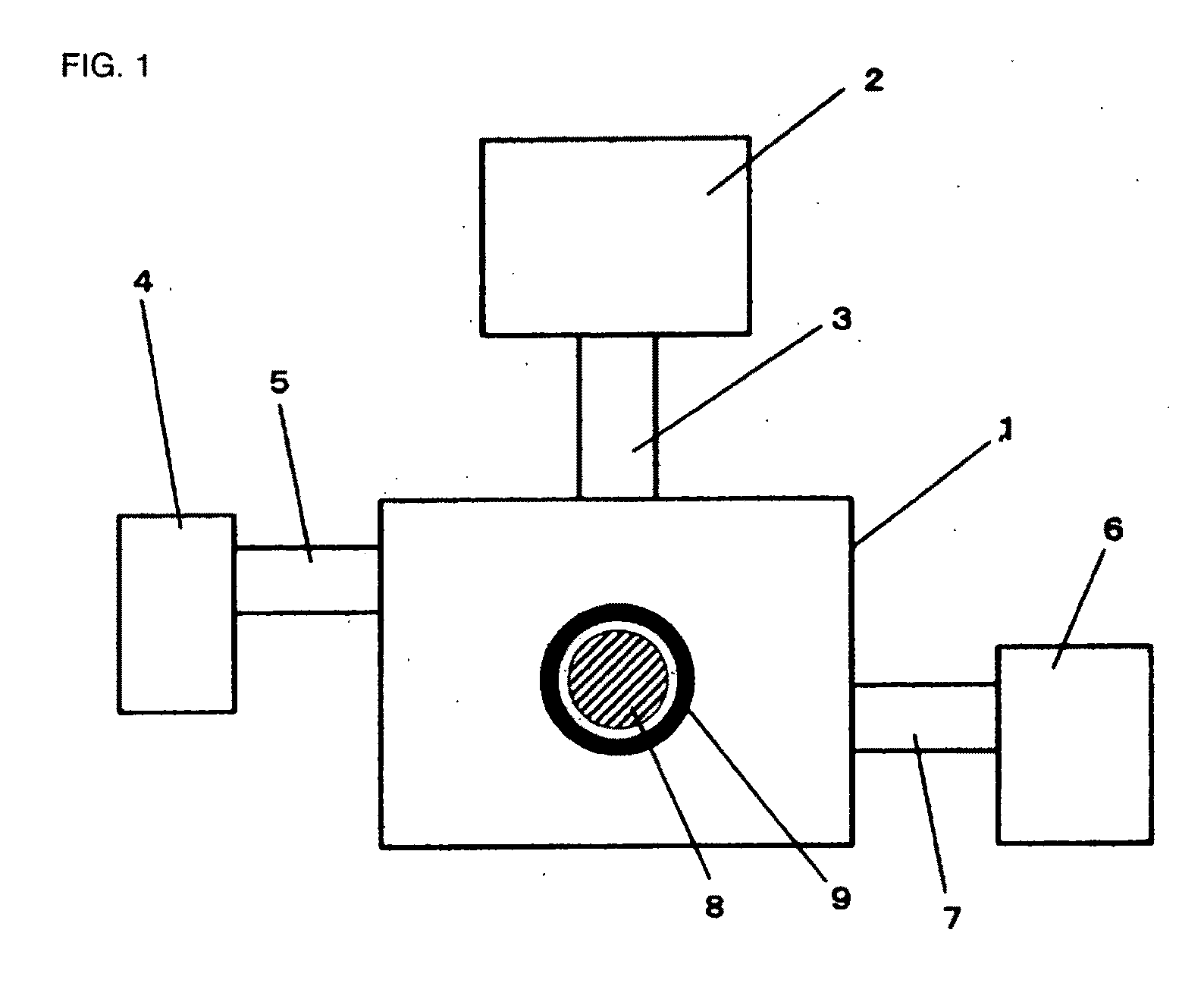Plasma generating device and method
a technology of generating device and plasma, which is applied in the field of plasma generating device and method, can solve the problems of ineffective methods of sterilization, material quality change, toxic, etc., and achieves the effects of high safety and clean state, easy winding, and simple structur
- Summary
- Abstract
- Description
- Claims
- Application Information
AI Technical Summary
Benefits of technology
Problems solved by technology
Method used
Image
Examples
examples
[0123]An experiment was conducted using a long tubule (made of silicone rubber) having an inner diameter of 2 mm and a length of 50 cm in the plasma generating device in FIG. 1.
[0124]The long tubule was bent to a circular form and placed around the cylindrical permanent magnet (made of neodymium, having a diameter of 3 cm, a height of 1.5 cm, and a surface magnetic field of 4000 G), which was fixed to a Teflon (registered trademark) plate.
[0125]The long tubule and the permanent magnet were both placed in the container 1. The air within the container was replaced with an oxygen gas and the pressure within the container adjusted to 0.1 Pa, and then microwaves of 4.5 GHz were emitted into the container 1.
[0126]FIG. 8 is a photograph showing how glow discharge was generated only inside the long tubule. It could be confirmed that plasma was generated throughout most of the long tubule. It is clear from this that plasma is easy to generate within a long tubule through electrodeless discha...
PUM
| Property | Measurement | Unit |
|---|---|---|
| pressure | aaaaa | aaaaa |
| pressure | aaaaa | aaaaa |
| temperature | aaaaa | aaaaa |
Abstract
Description
Claims
Application Information
 Login to View More
Login to View More - R&D
- Intellectual Property
- Life Sciences
- Materials
- Tech Scout
- Unparalleled Data Quality
- Higher Quality Content
- 60% Fewer Hallucinations
Browse by: Latest US Patents, China's latest patents, Technical Efficacy Thesaurus, Application Domain, Technology Topic, Popular Technical Reports.
© 2025 PatSnap. All rights reserved.Legal|Privacy policy|Modern Slavery Act Transparency Statement|Sitemap|About US| Contact US: help@patsnap.com



